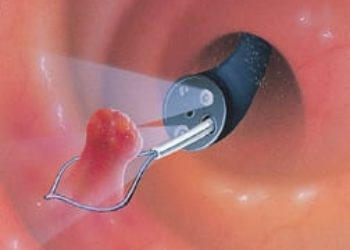Patient Basics: Upper Endoscopy (Esophagogastroduodenoscopy or “EGD”)
Originally published by Harvard Health.
What is the test?
This test inspects your esophagus, stomach and the first section of intestine (the duodenum) using an endoscope. An upper endoscopy allows the doctor to explore the cause of such symptoms as difficulty swallowing, abdominal pain, vomiting up blood, or passing blood in the stool. It can also diagnose irritation, ulcers, and cancers of the lining of the esophagus and stomach. During this type of endoscopy, the doctor can also take biopsy samples of tissue.
How do I prepare for the test?
Don’t eat or drink anything for eight hours before this test. It’s also best to stop taking aspirin and other NSAIDs for several days beforehand, to reduce the chances of bleeding should your doctor need to take a biopsy. Ask your doctor if you should avoid taking any other medicines on the day of the test. If you have diabetes, talk with your doctor about ways to avoid low blood sugar (hypoglycemia) since you will be fasting. If you wear dentures, remove them before the test. Arrange for a ride home because the medicine given for this test will make you drowsy.
What happens when the test is performed?
The nurse will place an intravenous catheter into your arm. During the procedure, the nurse will be monitoring your heart rate, blood pressure and oxygen content of your blood. You’ll probably be given a sedative through an IV. This medicine may prevent you from remembering the test; it might even make you sleep through it.
The doctor will spray a local anesthetic into your throat to prevent you from gagging when the endoscope is inserted. The endoscope used in this test is about half an inch in diameter and long enough to reach from your mouth through your stomach and into the first part of your small intestine. When the doctor places the endoscope in your throat, he or she asks you to swallow. This helps guide the endoscope into your esophagus. You are likely to feel pressure against your throat while the tube is in place and you might experience a “full” feeling in your stomach.
The doctor gently advances the tube through your esophagus into your stomach. He or she will then move the scope into the duodenum. The camera at the end of the scope takes pictures that appear on a video screen. Your doctor will watch for any suspicious spots on the lining of your esophagus, stomach and duodenum. If any appear, your doctor might use some small clippers on the end of the scope to remove a tiny piece of tissue for a biopsy.
Though the exam itself takes only 10-15 minutes, you will probably be in the exam room for 40 minutes or more because of the time it takes to set up. Your throat will feel numb, but this will wear off about 30 minutes later. The sedative will make you sleepy for an hour or more.
What risks are there from the test?
Complications are rare. One possible complication is aspiration (accidentally inhaling saliva into the lungs), which can cause pneumonia. If a biopsy is taken, or if the endoscope injures the wall of the esophagus or stomach, it can cause bleeding. If severe, internal bleeding can require a transfusion. In rare cases, perforation of the lining of the stomach, esophagus, or intestine can also occur, requiring surgery. The sedative given can sometimes cause an allergic reaction.
Must I do anything special after the test is over?
Medical personnel will probably watch you for half an hour or more after the test. Although you may eat an hour after the test, you shouldn’t drive or drink alcohol for the rest of the day due to grogginess from the sedative. Call your doctor if you experience dizziness, chest pain, difficulty or pain with swallowing, fever, black stools, or vomiting material that looks like coffee grounds. The last two symptoms can indicate that you are bleeding from your stomach lining.
How long is it before the result of the test is known?
Your doctor can tell you right after the test what was seen in your upper digestive tract. If biopsies were taken, it can take several days to a week before the results are back.

